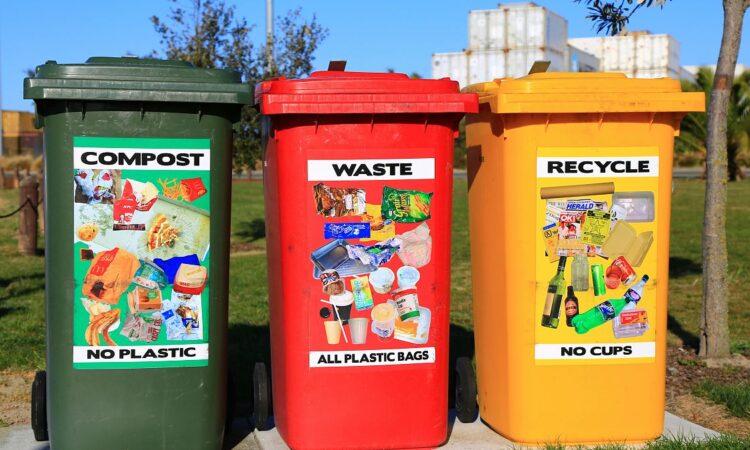
Italy has the best urban recycling rate in the EU while Spain has the lowest material consumption.
A circular economy has become a key model in the drive for countries to protect the environment while fostering economic growth.
The main aim is to reuse and recycle existing materials and products for as long as possible.
A new report by the Circular Economy Network (CEN) and the National Agency for New Technology, Energy and Sustainable Economic Development (ENEA) has compared the EU’s five biggest economies and their commitment to sustainable production and consumption.
Here’s how Italy, France, Germany, Spain and Poland compare in terms of waste management, innovation and ecological sustainability.
Italy ranks highest in the EU for its circular economy
CEN and ENEA’s report found that Italy had the most effective circular economy out of the five countries.
The study compared the EU countries using five categories: production and consumption; waste management; secondary raw materials; competitiveness and innovation; and ecological sustainability and resilience.
While different countries excelled in different categories, Italy led the overall ranking with 45 points. Germany came second with 38 points, followed by France with 30 points. Poland and Spain both received 26 points.
Spain has the lowest material consumption in the EU
Out of the five countries ranked, Spain had the lowest consumption of materials per inhabitant in 2022 at 9.8 tonnes.
This was followed by Italy with 12.8 tonnes per inhabitant, then France, Germany and Poland.
However, Poland performed best when it came to urban waste production with 365 kilogrammes per inhabitant compared to Germany’s 593 per capita, which is higher than the EU average.
Italy is top in the EU for waste management
As well as ranking first overall, Italy came out top in the waste management category.
According to the report, the urban waste recycling rate in Italy grew by 3.4 per cent between 2017 and 2022.
In 2022, the country’s recycling rate was 49.2 per cent, very close to the 50 per cent target set by the Waste Framework Directive for 2020 (which increases to 55 per cent in 2025).
Germany excelled specifically for urban waste recycling with a rate of 69.1 per cent compared to an EU average of 48.6 per cent.
France makes the best use of secondary raw materials
The third category looked at the circular material use rate, the ratio of materials recovered and fed back into the economy compared to total materials used by a country.
The best performance among the countries analysed was recorded by France (19.3 per cent), despite a drop of 0.2 percentage points compared to 2018. Italy recorded 18.7 per cent, which is high but has remained essentially static in the last five years.
Germany was just above the EU average at 13 per cent while Poland (8.4 per cent) and Spain (7.1 per cent) were below.
Germany ranks top for competitiveness and innovation
Germany came out top in the competitiveness and innovation category with the highest investment in circular economy activities out of the countries studied.
Germany spent €31.5 billion in 2021, followed by France with €20.4 and Italy with €12.4.
Between 2017 and 2021, all five countries recorded a growth in investments apart from France.
In terms of employment, Germany came out top with 785,000 workers engaged in jobs associated with the circular economy in 2021 while Italy had 613,000 and France 524,000.
Germany has the lowest consumption footprint but highest greenhouse gas emissions
When it comes to consumption footprint – the environmental and climate impacts from the consumption of goods and services- Germany proved to be the most sustainable with a value of 95 compared to France’s 98 and Italy’s 104 – equal to the EU average in 2021.
Over the last five years, Italy, France and Germany have decreased their consumption footprint while Spain and Poland’s have increased.
In terms of annual greenhouse gas emissions from production activities per capita in 2022, France and Spain had the lowest with 4,861 kg CO2 eq. and 4,925 kg CO2 eq. respectively.
Poland and Germany, however, reported significantly higher values of 9,587 kg CO2 eq. and 7,392 kg CO2 eq.
Over the last five years, all the countries analysed have recorded a decrease in greenhouse gas emissions. Germany ranked first with a 15 per cent decrease followed by Spain with 13 per cent and France with 8.
Emissions only decreased in Italy and Poland by 1 per cent.






